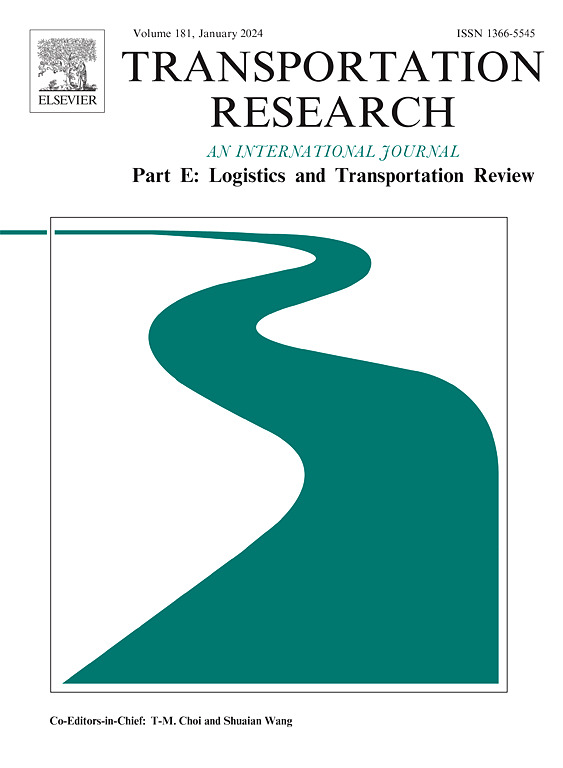Hedging demand uncertainty in a two-echelon supply chain: Advanced purchase discount or transshipment or both?
IF 8.3
1区 工程技术
Q1 ECONOMICS
Transportation Research Part E-Logistics and Transportation Review
Pub Date : 2025-02-01
DOI:10.1016/j.tre.2024.103947
引用次数: 0
Abstract
Advanced Purchase Discount (APD) and transshipment are two popular strategies to hedge against demand uncertainties in supply chains. However, so far there are no theoretical guidelines on which strategy should be selected under what situations. Moreover, fewer scholars investigate the joint impacts when both strategies are adopted in the same supply chain. This paper examines the interaction between two strategies in a two-echelon supply chain with one manufacturer and two independent retailers. In addition, we design a joint contract, under which the manufacturer signs an advance-purchase discount contract with the two retailers and facilitates the transshipment between them when one faces stock out while the other has a surplus. Our analysis shows that APD and transshipment are complementary to each other to some extent. While the retailers always prefer the joint contract due to its high flexibility, the manufacturer achieves the highest profit if only APD is applied. However, APD itself is not an equilibrium policy unless the manufacturer can prevent the retailers from making transshipment themselves. Otherwise, there exists a zone of Pareto improvements where it is more beneficial for the manufacturer to facilitate transshipment and generate higher profits rather than opting out of it. The zone is based on the retailer’s price margin and the overall supply chain’s margin ratios. Outside the zone, the manufacturer would not participate in transshipment even if it cannot be prevented. This gives another reason, besides its complexity, why the joint contract is not implemented as commonly as APD or transshipment in practice.
求助全文
约1分钟内获得全文
求助全文
来源期刊
CiteScore
16.20
自引率
16.00%
发文量
285
审稿时长
62 days
期刊介绍:
Transportation Research Part E: Logistics and Transportation Review is a reputable journal that publishes high-quality articles covering a wide range of topics in the field of logistics and transportation research. The journal welcomes submissions on various subjects, including transport economics, transport infrastructure and investment appraisal, evaluation of public policies related to transportation, empirical and analytical studies of logistics management practices and performance, logistics and operations models, and logistics and supply chain management.
Part E aims to provide informative and well-researched articles that contribute to the understanding and advancement of the field. The content of the journal is complementary to other prestigious journals in transportation research, such as Transportation Research Part A: Policy and Practice, Part B: Methodological, Part C: Emerging Technologies, Part D: Transport and Environment, and Part F: Traffic Psychology and Behaviour. Together, these journals form a comprehensive and cohesive reference for current research in transportation science.

 求助内容:
求助内容: 应助结果提醒方式:
应助结果提醒方式:


